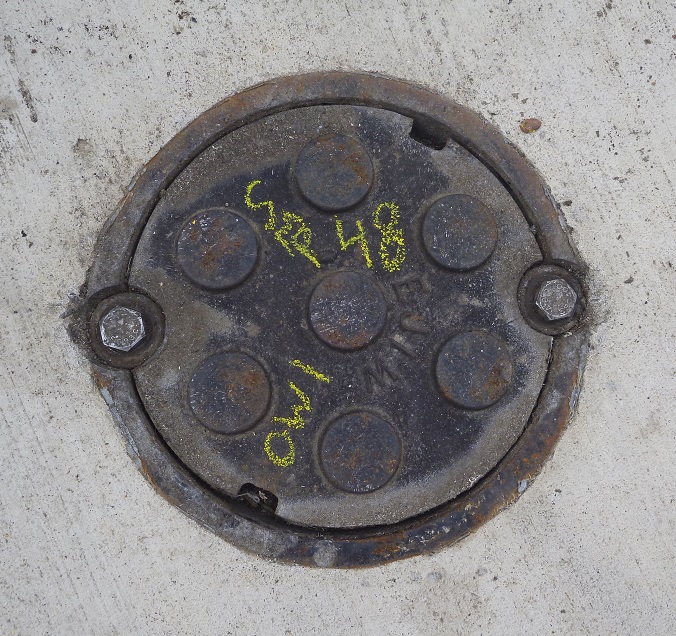What Does It Look Like - Green Stormwater Infrastructure
The Green Beneath Our Feet
Like Philadelphia's water and sewer systems, the bulk of green stormwater infrastructure is located underground. As a result, many people don't recognize green infrastructure when they see it. What looks like a street tree, may be one part of a larger system underground.
But there are clues on the surface that will let you know when a site has green infrastructure. As your organization continues to maintain your adoption sites, you'll quickly start to recognize the different parts that make these systems work.
Green Inlets
Have you ever noticed two sewer inlets side by side? This arrangement is a tell tale sign of green infrastructure. Often located at a corner, or near the middle of a city block, this arrangement allows for stormwater to first flow into the green infrastructure. The second inlet, leads to the sewer system and collects flow that the green may have missed.
 |
||
| Stephen Girard Elementary - South Philadelphia | A.S. Jenks School - Lower Moyamensing |
Inlet Filter Bags
Green inlets allow stormwater to flow directly into green infrastructure. To help protect the piping running throughout the system, PWD uses a filter bag to capture trash, leaves and other debris. If you notice a full filter bag during your site visits, be sure to include it in your weekly report.
| Filter bag mounted in inlet |
FLEX Storm Inlet Filter |
Curb Cuts
Much like a green inlet, curb cuts allow stormwater to directly enter green infrastructure. Curb cuts are typically found in stormwater bumpouts, planters and stormwater trees.
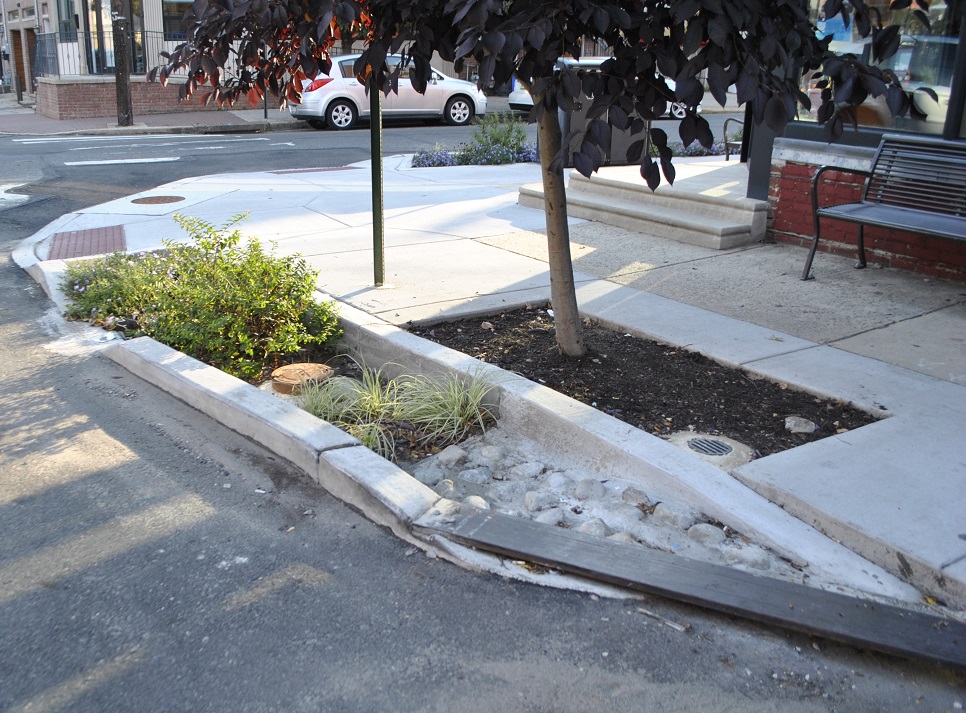 |
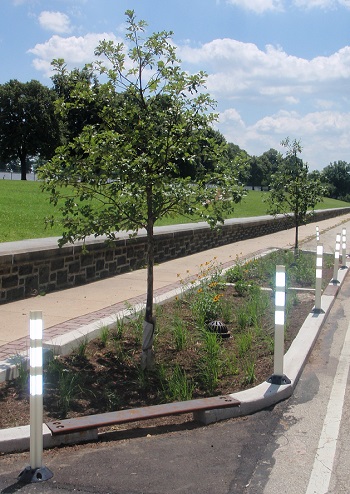 |
|
| 3rd & Fairmount Ave - Northern Liberties | Queen Lane Reservoir - East Falls |
Trench Drains
Similar to a curb cut, trench drains allow water to flow directly off the street and into green infrastructure. Trench drains often feature a metal cover which protects the not only the drain but also the surrounding sidewalk. On site visits, take note of any trench drains and make sure they are not clogged with leaves, trash and other debris.
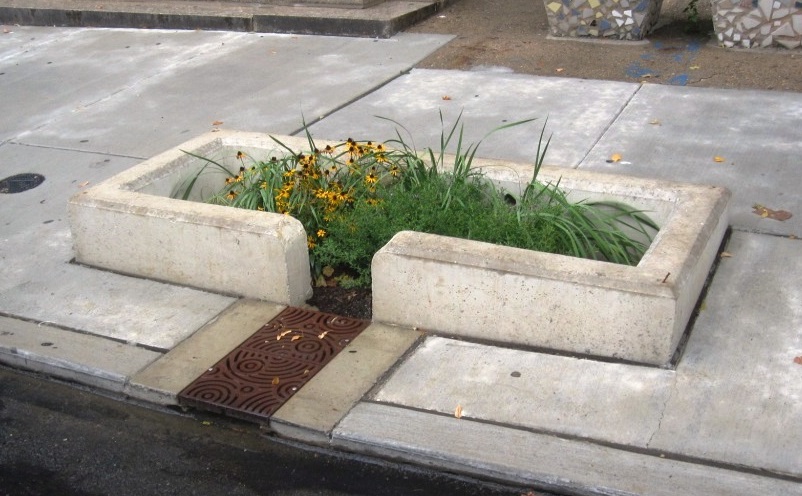 |
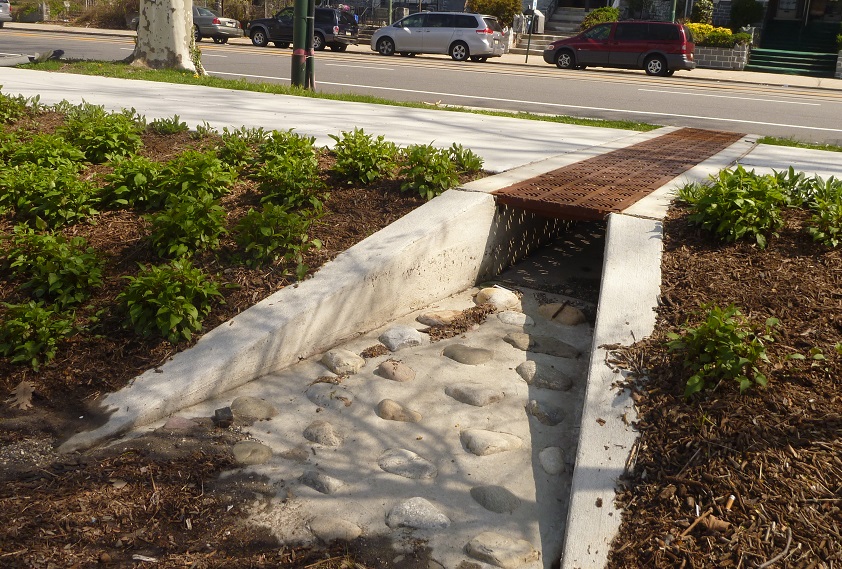 |
|
| Bodine High School - Northern Liberties |
Philadelphia Zoo - Girard Ave |
Observation Wells & Clean-Outs
Observation wells allow PWD to monitor the effectiveness of green infrastructure. A small pipe connects to the stone basin at the base of the infrastructure. Engineers are able to measure the amount of water being managed using sensors.
|
|
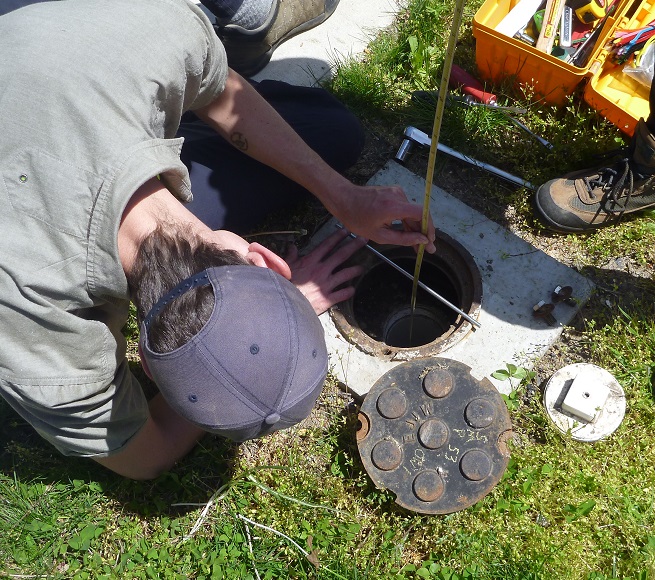 |
|
| Observation Well Cover | PWD Engineers using an Observation Well |
Clean-outs feature a separate pipe that connects into the pipe work within the green infrastructure. They allow PWD to vacuum out any dirt, sediment or trash that may have made it's way into the system.
 |
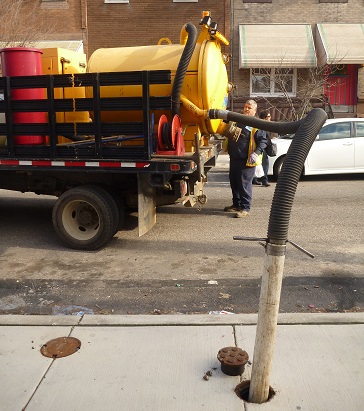 |
|
| Clean-out Cover |
Vacuuming out |
